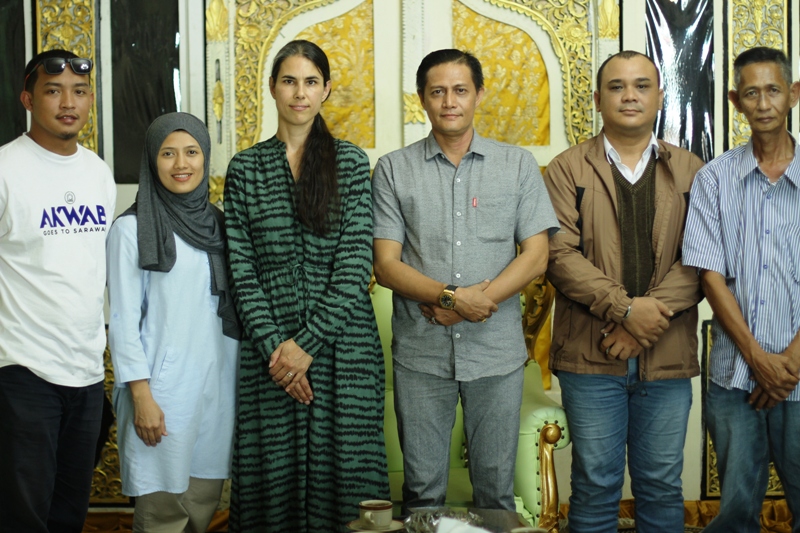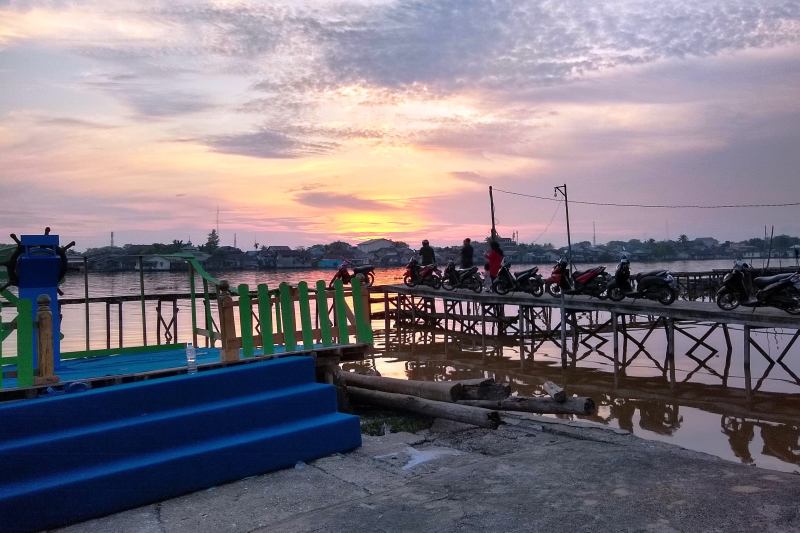
25 Feb Blog: Being a ‘real’ Indonesian? (Part 2)
By Katja Paijens
My search for Sultan Hamid II of Pontianak – about which I wrote in my previous blog – took me to Yogyakarta before visiting Pontianak itself. I was in Yogyakarta to improve my knowledge of the Indonesian language, culture and history. As soon as I got there, I became fascinated by the importance of ethnicity in Indonesia.
As I walked around the cultural and intellectual heart of Java, the people of Yogyakarta would often call out ‘Belanda’ or ‘Holland’ to me. When I asked how they knew, they said my height, skin colour, European nose, and fast, purposeful gait gave me away. This surprised and intrigued me. Although I personally do not care much about my own ethnicity, people in my home country of the Netherlands regularly ask me where I originally come from, due to my very light brown skin and darker eyes and hair, all inherited from a distant Javanese ancestor. As I came to find out, ethnicity is situational and thus relative.
The people in Pontianak did not remind me of my own ethnicity, unlike those in Yogyakarta. That probably had something to do with the multi-ethnicity of Pontianak itself, which means that its inhabitants are used to a variety of social-cultural groups. When Sultan Hamid’s forefather Syarif Abdulrachman al’Quadrie founded the city in 1771, he built it on the equator, in the delta of Indonesia’s longest river, the Kapuas. Being located along the Kapuas and near the South China Sea coast, Pontianak has attracted all kinds of people. Nowadays, the city has around 665,000 inhabitants, including people of Malay, Chinese and Dayak descent, along with smaller numbers of Javanese, Bugis, Arabs, and Bataks. Most Malay and Javanese are Muslim, while most Chinese are Buddhists or Christians, as are most Dayak. Pontianak’s mixture of ethnicities, cultures and religions gives the city its own character.
Sultan Hamid was of mixed descent too. Because of this, many people in Yogyakarta and Pontianak who saw Hamid’s portrait found him to be very ganteng (handsome), but not a ‘real’ Indonesian. His skin was too light, his nose insufficiently ‘Asian’, and his appearance too European. They were correct in a sense. His Arab-Malay descent and his part-Turkish mother were visible in his appearance. In addition, Hamid also had European manners, due to his European upbringing and education, his affiliation with the Dutch authorities, and his Dutch wife.
When I introduced my research to non-Malay citizens of Pontianak, they often did not even know that their city had a sultan. One young woman explained to me that she was not aware of it because she is a Christian Dayak and the sultan, of course, is of Arab-Malay descent and a Muslim.
Those experiences made me think about multi-ethnic societies and ethnic segregation, one of the themes of my research into Sultan Hamid II. I thought of the articles in the revolutionary Republican newspapers (1945-1949) I had studied, in which Hamid was dismissed as unreliable because he was ‘not a real Indonesian’. It made me wonder what a ‘real Indonesian’ is supposed to look like, or how he is supposed to act.
Through my experience in Indonesia, it became clear to me how relevant and situational ethnicity is. How people identify themselves and how they are appointed depends on the cultural and social context. An individual or group may conceive their ethnicity very differently than someone from the outside. Based on presumed similarities or differences, ethnicity can be used as a tool for including or excluding people, as will become clear in Sultan Hamid’s biography.


Paijens is a PhD candidate based at KITLV and the Leiden University Institute for History. She is writing a political biography of Sultan Hamid II of Pontianak (1913-1978). Her thesis focuses on Hamid’s role in and significance to Indonesia’s decolonization and state formation, 1945-1950).




Robert Egeter van Kuyk
Posted at 15:53h, 02 MarchWhen Sri Paduka Said Sharif al-Habib Sultan Abdulhamid II ibn ul-Marhum bin Mohammed Alkadrie – commonly called “Max”- died in 1978 and his remains were taken to Pontianak from Jakarta, I understand there was a considerable concourse of people paying homage to the late Sultan, as well as to the Sultana and their son, the titular Crown Prince. The Prince observed after his last, recent visit to Pontianak with his wife that his presence had not gone unnoticed, as they say. It is therefore interesting to read that miss Paijens found so few people in Pontianak who were aware of their having a Sultan at all. Maybe this changes when the last reigning Sultan is again elevated to the dignity of National Hero, as seems to be the intention of the central Government. I am certainly looking forward to miss Peijens’ findings.